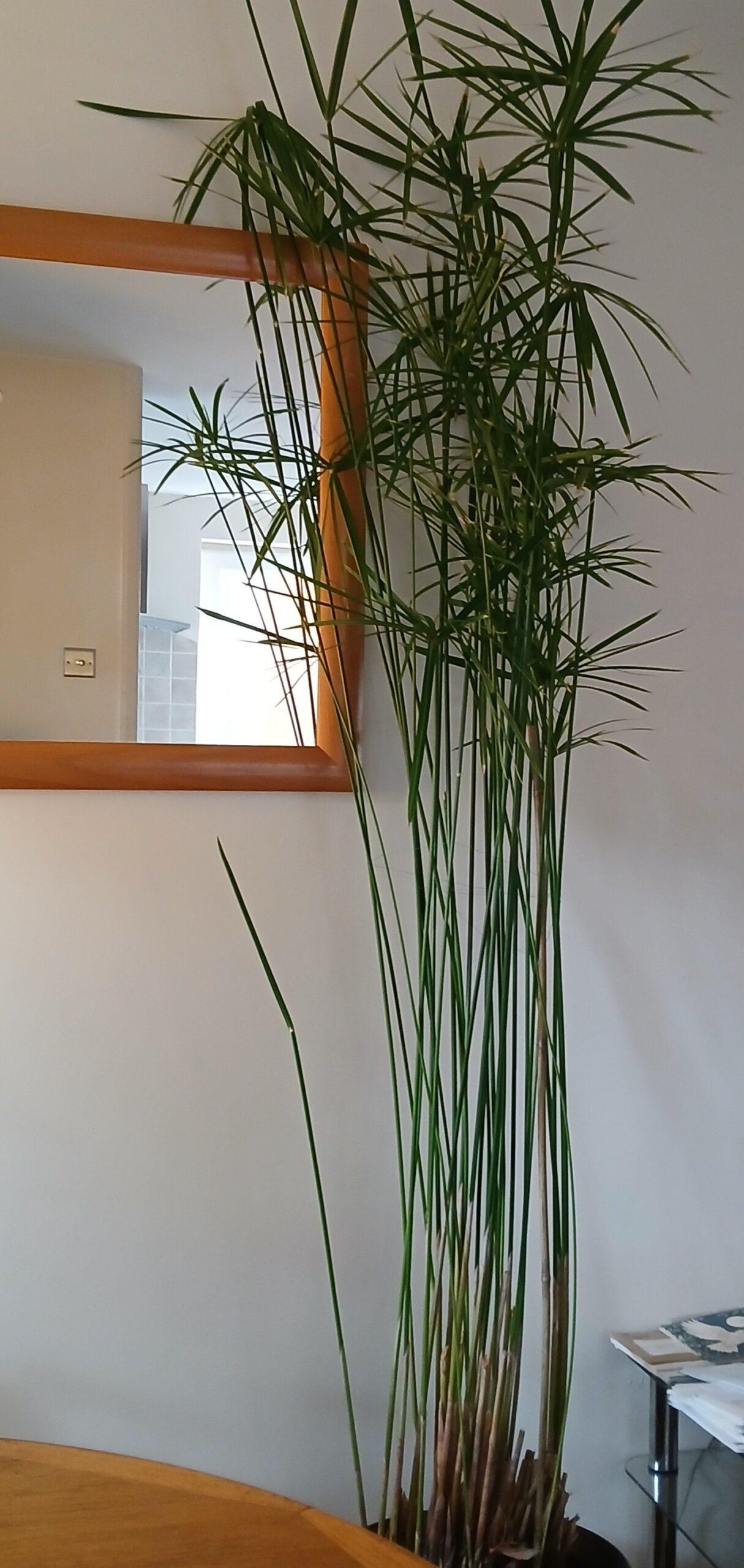Umbrella PalmThe Graceful Water-Loving Ornamental
The Umbrella Palm, also known as Umbrella Plant or Umbrella Papyrus, is a striking ornamental plant cherished for its tall stems topped with radiating leaflets that resemble the spokes of an umbrella. Botanically known as Cyperus alternifolius, it belongs to the sedge family (Cyperaceae) and is a close relative of the ancient Egyptian papyrus plant.
Native to Madagascar and tropical Africa, the Umbrella Palm is a favorite in water gardens, pond margins, indoor pots, and tropical-style landscaping due to its unique shape, ease of growth, and tolerance for wet feet.
🌿 General Description
Botanical name: Cyperus alternifolius
Common names: Umbrella Palm, Umbrella Plant, Umbrella Sedge, Palm Grass
Plant type: Evergreen ornamental grass-like sedge
Height: 3 to 6 feet (taller in moist conditions)
Spread: 2 to 4 feet
Foliage: Long, slender stems topped with umbrella-like whorls of thin, green leaflets
Flowers: Small, greenish-brown clusters at the center of the umbrella leaves (not very showy)
Lifespan: Perennial in warm climates, annual or houseplant in colder areas
☀️ Light and Temperature Requirements
Sunlight:
Grows best in full sun to partial shade
Indoors: Place near bright, indirect light or a sunny window
Temperature:
Thrives in 20–35°C (68–95°F)
Hardy in USDA zones 8–11
Can tolerate light frost if roots are protected, but prefers warmth
In colder climates, grow as a houseplant or bring indoors in winter
💡 The more sun it receives, the taller and greener it grows.
💧 Watering Routine
Water is key to Umbrella Palm’s success—it naturally grows in marshy and aquatic environments.
Mature plants (outdoor/pond):
Can grow directly in water or wet soil
Ideal for edges of ponds, bog gardens, or containers with no drainage
Potted plants:
Keep soil constantly moist
Use a deep saucer or tray and keep filled with water
Don’t let it dry out even for a day
⚠️ Underwatering causes yellowing leaves and leaf-tip burn.
🌱 Soil and Fertilizer Needs
Soil:
Prefers rich, loamy or silty soil with high moisture retention
Grows even in clay soils or pure water
pH: Slightly acidic to neutral (6.0–7.5)
Fertilizer:
Feed with a balanced liquid fertilizer (10-10-10) once a month during spring and summer
For aquatic planting, use pond plant fertilizer tablets
🌿 In nutrient-rich ponds, additional feeding may not be necessary.
✂️ Pruning and Maintenance
Pruning:
Remove yellow or dying leaves at the base
Trim off flower heads if not desired (seeds can spread easily)
Cut back tall or floppy stems to encourage new upright growth
Grooming tip:
To maintain symmetry, rotate the pot occasionally if grown indoors
✂️ Umbrella Palm grows fast, so regular trimming helps manage its size and shape.
🌿 Propagation Methods
Division (easiest and fastest):
In spring or early summer, divide the root ball into smaller clumps
Replant directly in moist soil or aquatic baskets
Stem Cuttings:
Cut a healthy umbrella stem and place the leaf-top upside down in water or moist soil
Small shoots may form at the center
Once roots appear, plant in soil or pond margin
Seeds: Possible but slow and less reliable
🌱 Division ensures quick, strong new plants that resemble the parent.
🐛 Pests and Problems
Umbrella Palm is generally pest-free, but may face:
Spider mites or aphids (indoors, especially in dry air)
Fungal issues in overly humid or unclean pond water
🛡️ Mist leaves regularly or wipe with damp cloth. Use neem spray for pests. Ensure good air circulation indoors.
🏞️ Landscape and Decorative Uses
Water features: Perfect for pond margins, water tubs, fountains
Tropical gardens: Adds height, texture, and interest
Container gardens: Tall potted plant for patios, balconies, or indoors
Houseplant: Great in bright bathrooms or kitchens where humidity is higher
🌱 Often paired with canna lilies, taro, elephant ears, or papyrus for a lush, jungle-like look.
✅ Conclusion
The Umbrella Palm is an architectural, water-loving plant that’s both low-maintenance and visually striking. Whether you place it by a pond, in a bright indoor corner, or in a large pot on your terrace, it will reward you with elegant foliage and a strong vertical presence. Its love for water makes it perfect for beginners, especially those who struggle with under-watering.
“





Reviews
There are no reviews yet.